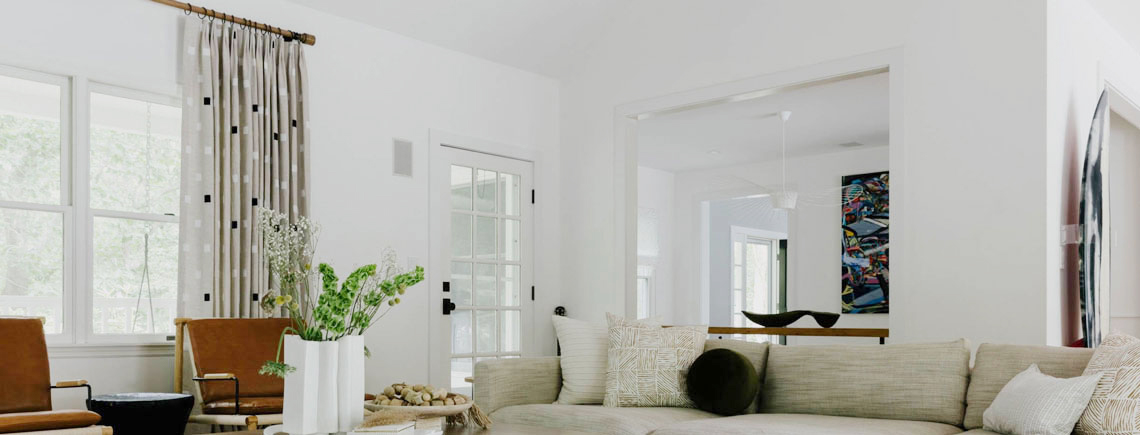Casa Marcelo
Design was always in Abigail Horace’s blood. A first-generation daughter of Panamanian and Dominican parents, she grew up in Queens NY inspired by a fashion-conscious mother and an architecture-loving father who took her on weekend expeditions to photograph landmark buildings.
“As a teen, I was always interested in design,” she said. “I loved decorating my room, playing with color and fabric.”
That early passion blossomed as she earned a Bachelor’s of Fine Arts in Interior Design at the New York Institute of Technology, and ventured into a broad range of interior, furniture and exhibition designs. She established herself as a senior interior designer at Dumais ID and later at Hendricks Churchill in Sharon. She has designed high-end residential projects in Massachusetts, New York and Connecticut as well as in such luxurious locations as Paris and Mustique Island.
But still, she wanted more. “I wanted to explore being on my own,” she said. “I was familiar with this area because I had a college friend in Kent and I used to come here a lot. After my husband and I had our first child, I was done with the city.”
Although overqualified, she applied on a whim for a job as a draftsman at Henrick Churchill in Sharon. “I didn’t really want to be a draftsperson,” she said, “That’s what you do at the beginning of your career but they basically created a position for me and relocated me.”
In 2020, she launched her own company, Casa Marcelo, (Marcelo is her maiden name) first in Falls Village and now in Salisbury. So quickly has she become intrenched in the design community she was recently included in the 2024 Frederic It List by the design magazine.
The list recognized 12 rising designers who “embody a new generation of style trailblazers. As fluent in historic references as they are unbound by tradition, these global talents bring a fresh new perspective to the world of decorating …”
Horace has found the cultural climate in the Berkshires to her liking. “The esthetic here is a little more relaxed, a little more casual,” she said. “Typically my clients are from New York and are decorating a second home. The beauty of the region is the outdoors and often my clients have beautiful views so it is more about bringing that beauty inside.”
She said there are two current themes in décor: minimalist and maximalist. “I try to find a balance between the two. Minimalist is quieter but minimalism can be done by anyone. What I bring is a mix of the two, while still creating a calm space.”
She finds her work to be more satisfying than when she worked for a metropolitan firm. “The firm applied a concept to every project which made it boring for me. I felt like I was imposing a design on the client. Now when I work with a client it’s almost like dating. You have to figure who that person is and what they like. I like the challenge of reflecting the client in the space.”
To do that she starts with an extensive questionnaire. “What kind of impression do they want to make on their guests when they walk through the door? Do they like natural fibers? Do they prefer silver or gold metals? Sometimes I get unusual spaces, and I enjoy figuring out those spaces.”
Which brings her to a major point. When people are planning a renovation, they often seek a contractor as their point of departure. “But people should approach a designer as soon as they purchase a house,” she said. “Clients should get the designer to create design concepts so the contractor’s specifications can be developed around that. For instance, on a full-build in Kent we changed windows, changed the stairs and we had to consider all these things before we started our designs. All the problems were worked out before the start of the project.”
Care is taken that the client is never surprised. “We do purchase items for clients but I give them options and a 3-D rendering after they approve everything. A lot of people have difficulty envisioning what everything will look like,” she said.
As to furnishings, she said she is influenced by texture more than anything else. “Winters here are so long and more than anything else, you want it to feel cozy,” she said. “I bring pattern in with the smaller items—for larger items, I usually lean toward texture more than pattern.”
She added that, despite our disposable society, families want furniture to be comfortable and durable. “They don’t want to have to replace everything in another five years. I’m 37, and I have had clients my age who want their items to be sustainable and they are particular about off-gassing.”
A mixture of the old and new can meet this goal. “People love vintage items and we reuse items that are either the clients’ own or from vintage shops. I think it is important to reuse rather than buy brand new. These items also have more character. I do like the look, particularly in Connecticut and the Berkshires, because there is history here. It speaks to the house and the area.”
Horace has undertaken projects throughout the Northwest Corner and the Southern Berkshires. She undertakes five to 10 projects a year, varying in scale.
She is located at 7 Academy Street in Salisbury; hello@casamarcelo.co

